
7 minute read
GRILL CATTLE COMPANY
by Doug Ward. Doug@ABPmag.com
EDGEMONT, SOUTH DAKOTA
Growing up on a diversified farm in which dairy, hogs, beef and crops were a part of every stead in west central Iowa, Jeff Grill found his passion in raising beef cattle. That desire has led to the herd that he owns today in Edgemont, South Dakota. After years of hard work, Grill Cattle Co. now consists of top-quality Red Angus genetics built for the western range environment.
Grill Cattle Co. Mission Statement
We will provide the commercial cattle industry with genetics that excel in convenience traits and profitability in all levels of the beef business, while maintaining the highest degree of customer service. Jeff’s path to his success started many years ago when he was just a teenager. At the age of 16 he learned how to artificially inseminate cattle. Through A.I., his goal was to improve upon his herd of Simmental cows. After graduation from high school, he was headed to South Dakota State University at Brookings to pursue a degree in Animal Science. This where his knowledge in beef cattle started to improve. His work study at school was supposed to be about working at the sheep unit. This was kind of a letdown to him when he was assigned to the unit. His goal was to learn about cattle and the industry. One day, he stopped into Dr. Pruitt’s office to visit and that’s where things changed. He was then switched from the sheep unit to what he really wanted, working at the cow/calf unit. There is where his hands on experience was gained in the day-to-day operation. Working at the beef unit was a good fit for him. With the ability to not only work but to learn at the same time. The amount of education gained by working with top notch people and quality cattle cannot be measured. This is a far better place to actually learn and make decisions than sitting in just a classroom situation. The cow/calf unit raised both Angus and Simmental cattle, not only for teaching purposes, but also to produce seedstock for the commercial industry. Jeff was not a part of the judging team, but part of his duties was to get classes to the judging team practices. So, while working with these cattle he would judge them and compare how he would place them to the official placing the coach would put on them. While in college, Jeff competed on the SDSU Rodeo Team entering the team roping and tie down events. While travelling to rodeos at other colleges, he met his wife, Diana. She was a native of Clear Lake, South Dakota where her family raised cattle. She represented North Dakota State University on their rodeo team in the breakaway roping and barrels. Consequently, they would compete at the

Jeff Grill and his wife Diana
same rodeos around the Great Plains Region. Jeff and Diana were married the summer after graduating from college. He went to work at his father-in-law’s ranch where they would take heifer calves and raise them up to sell as bred heifers. Some of his duties were picking the bulls to A.I. to as well as looking for clean-up bulls. There they would manage up to 200 head per year. Eventually a call from Dr. Pruitt would change things. Lindskov-Thiel Ranch of Isabel, South Dakota was looking for a herdsman at the time, so Jeff was put in contact with Brent Theil. Jeff’s work habit, knowledge of cattle and his ability to pay attention to detail gained him the acknowledgement of his former advisor. For the next 7 years, Jeff helped manage the replacement heifers and the young cow herd at Lindskov-Thiel. He found that he enjoyed the conditioning of the sale bulls. Working for a topnotch outfit really helps in gaining experience in marketing and customer service also. One of the best parts of working there was meeting people from throughout the industry. The desire to run and manage his own ranch was building. Many decisions had to be made. What, where and how are the three words that have to be considered. Jeff wanted to make a name for himself by raising quality seedstock. Having helped with some neighboring ranches while up in the Isabel area he started to notice that they had cattle that in his eyes were like the kind and type he wanted. He chose Red Angus. Jeff started into the Red Angus business with the purchase of heifers from the Broken Heart Ranch. Then he purchased additional Red Angus from Gill Red Angus and Double Fork Ranch. He was looking for western cattle that worked for him, not him working for his cattle. That’s why his mission statement reads the way it does. The where and how was the next questions to answer. Well things kind of fell into place. Jeff’s family had just moved from Iowa to Hot Springs SD to manage a resort. Jeff and Diana were fortunate enough to live in one of the cabins that his parents managed. When first moving to the southwestern part of the state, Jeff managed a ranch there along with his own cattle. He eventually worked out a deal with an absentee land owner
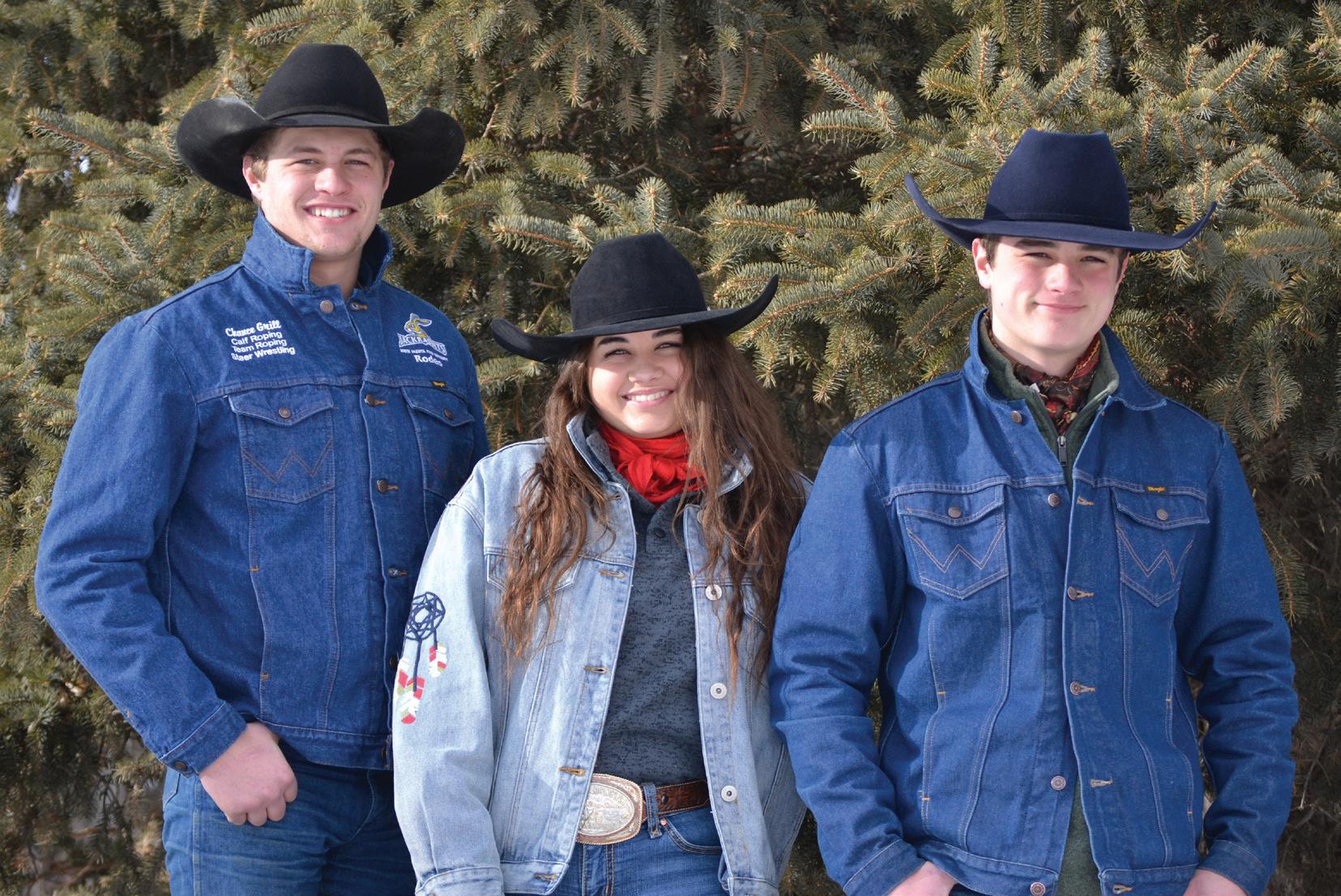
Chance (20), Taylor (18) and Cade (16)
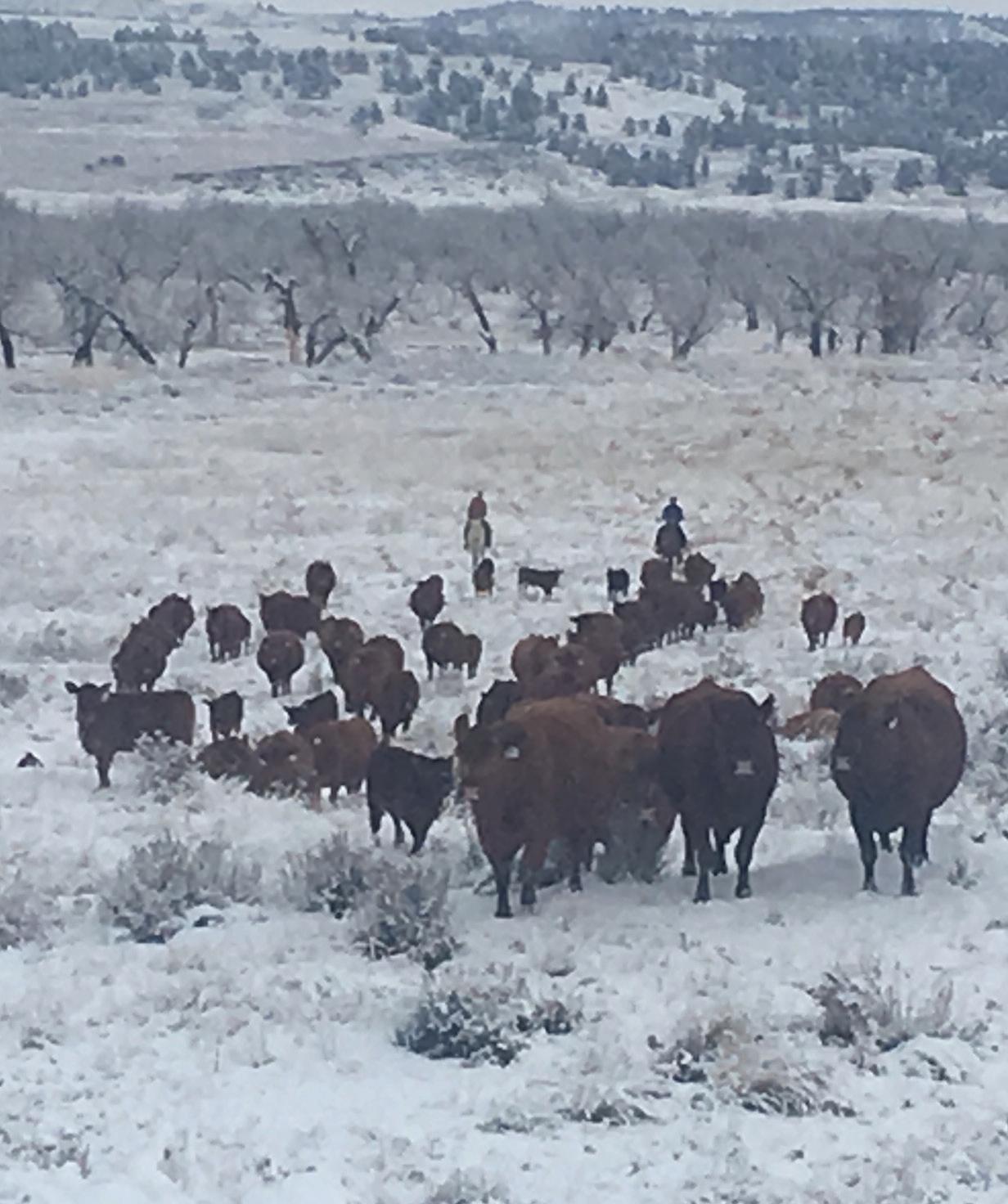

near Custer, SD. At that time 300 commercial cows were a part of the ranch and expansion of the owner’s ranch was the goal. His plan was that each step had to have just that, a plan. Jeff’s plan worked and four more ranches were added making the cowherd grow to 1200 momma cows. Now to run that many cows on that many ranches takes some hard work and management. Paying attention to detail was a must. Every decision had to work out financially. These ranches were all down south by Edgemont, along the Nebraska border. When Jeff’s brother Brad graduated from college, he started running a ranch for the same owner near Custer. This worked out because now the whole family was in the same area after being separated for a long period of time. The pieces were starting to fall into place for the development of a solid set of Red Angus cattle. Jeff and family started Grill Cattle Co. and his brother Brad started B Lazy T Ranch near Hot Springs where he also raises Red Angus Cattle along with his family. The goal of their ranch is to raise cattle that offer calving ease and are moderate framed. With increasing cost nowadays, cows need to offer maternal power and environmental hardiness and bring in a big calf with no supplements. Breeding selection also focuses on fertility, feet-legs and eye appeal. Cows are grazed out on big native pastures for 8 months of the year. A 45–50-day calving window is desired. All of this is done in big country. The cowherd was devel-
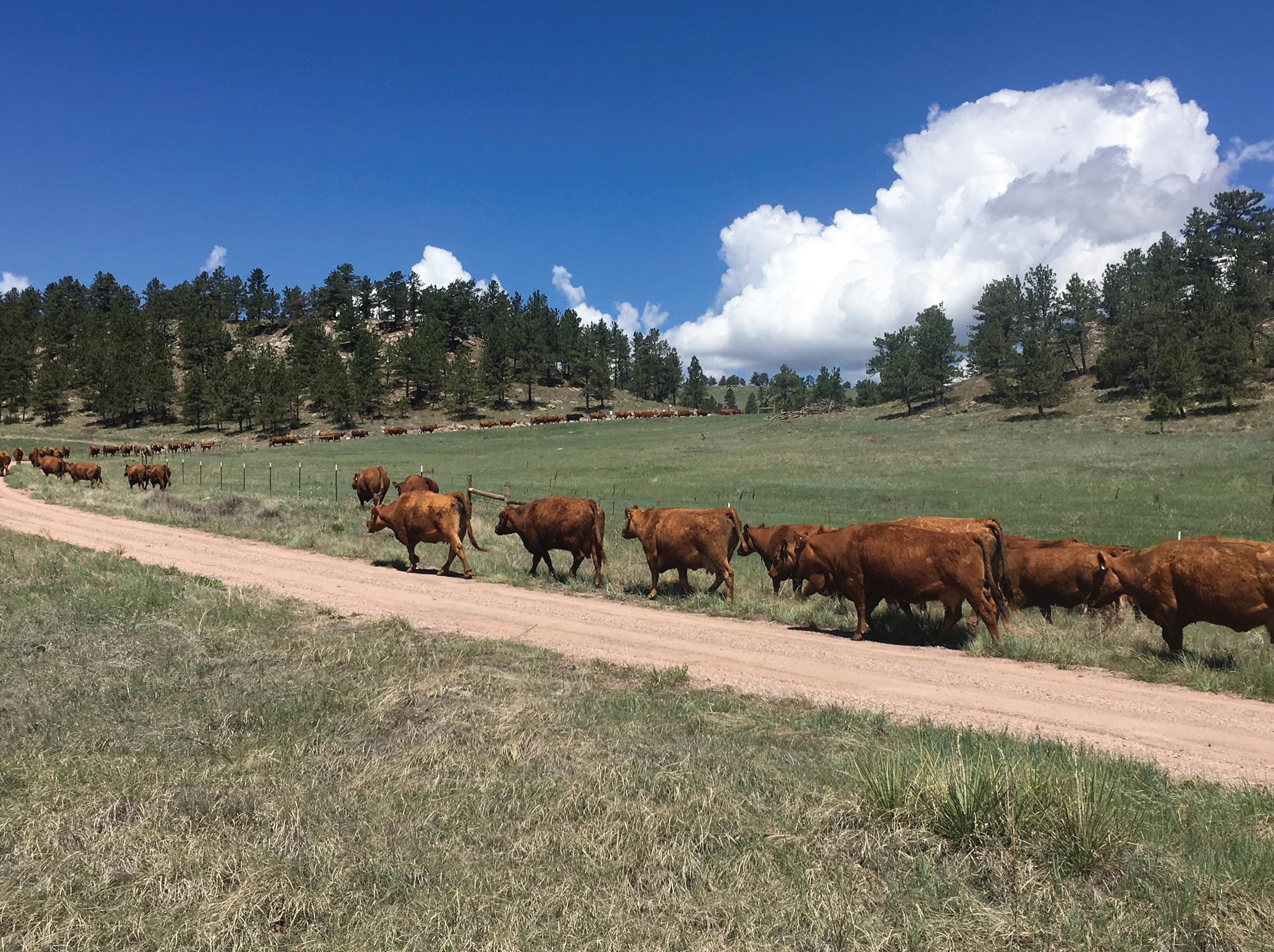

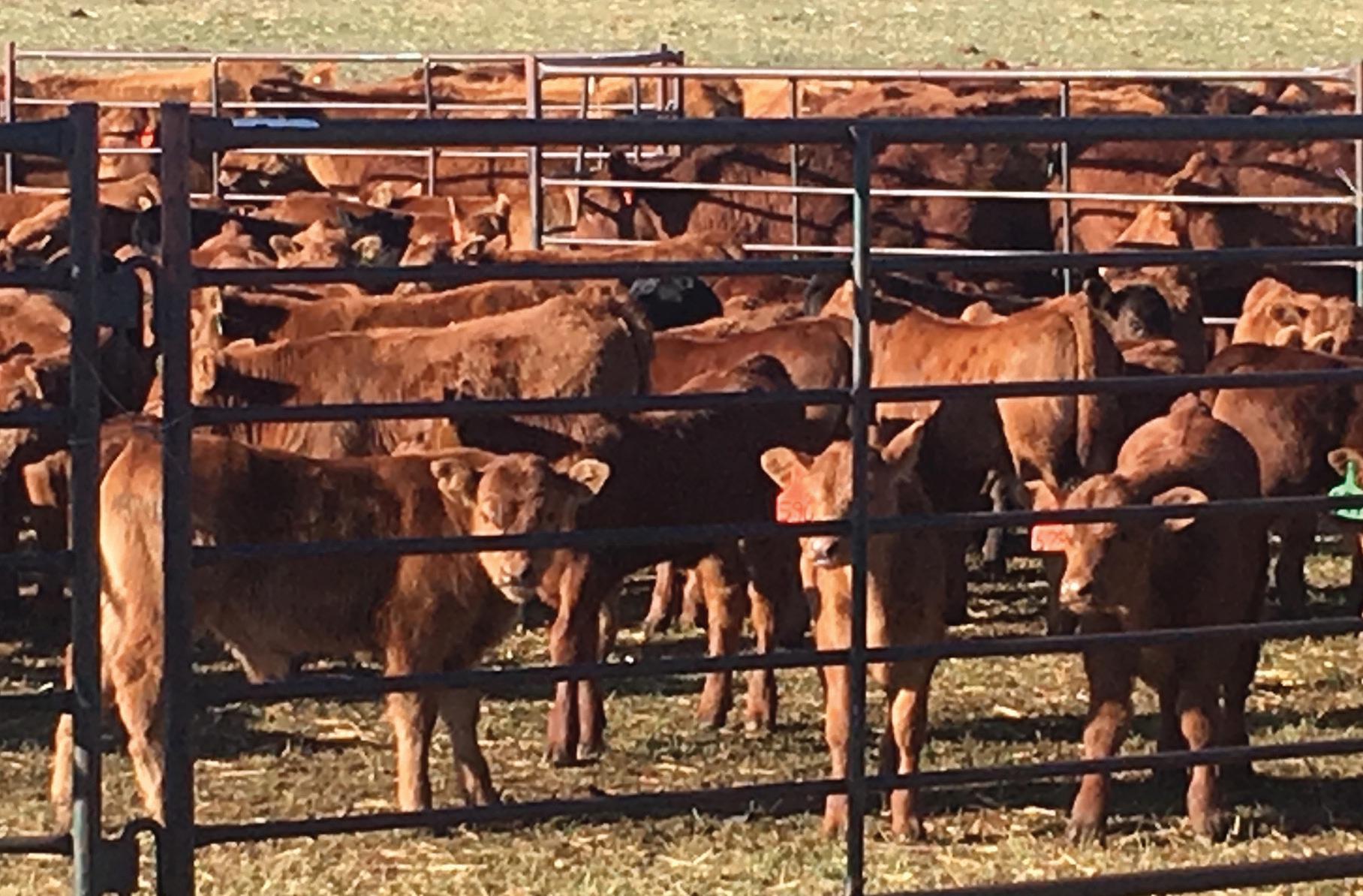
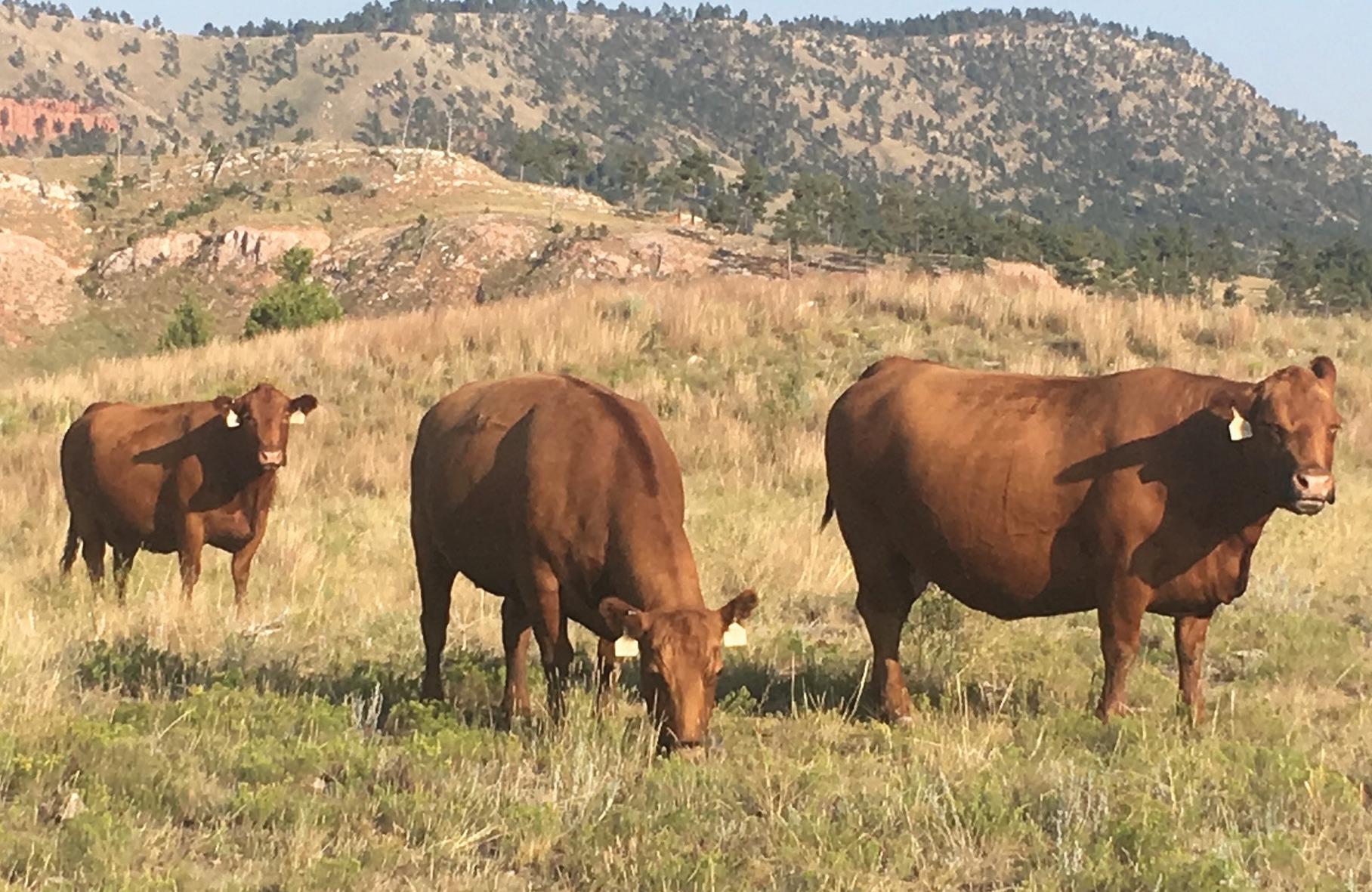
oped by Jeff, it was not inherited. But of course, there were learning curves along the way while growing the herd. Steer data from customers of the programs bulls proves that they can compete at the sale barn and in the feedlot. Jeff and Brad along with the Fick family join forces to market their genetics together. They market their bulls at the Red Western Bull Sale in Crawford, Nebraska. Their annual sale is on the 4th Friday in April, with it being April 23rd this year. Usually, 50-60 bulls are offered in their bulls sale each year. This year is marking the 17th year of the sale. These bulls are conditioned to hold up in their western environment. One of the biggest rewards has been the feed back on the performance of their genetics. Jeff and Diana have three children. Chance is 20, rodeos for SDSU and works in the cow business. Daughter Taylor is 18 and is a Senior in high school while son Cade, 16, is a Sophomore.
Grill Cattle Co.
Grill Cattle Co. looks forward to meeting new and past customers either at the sale or at the ranch. Creating relationships with cattlemen and women in the cattle business. ABP





